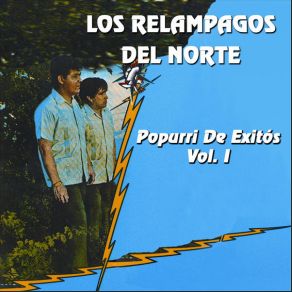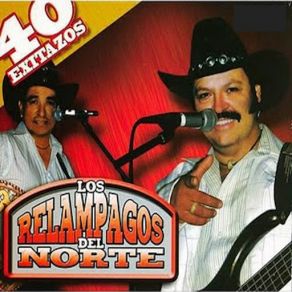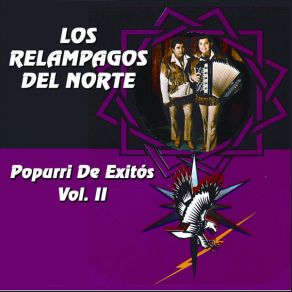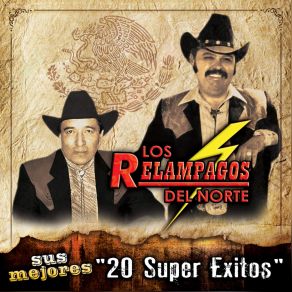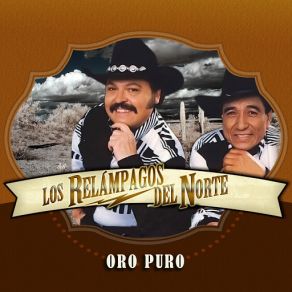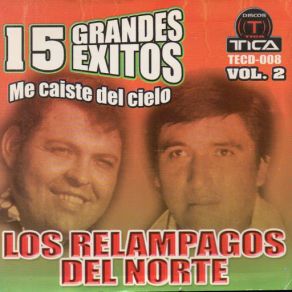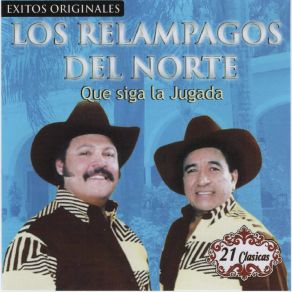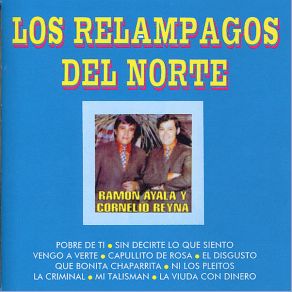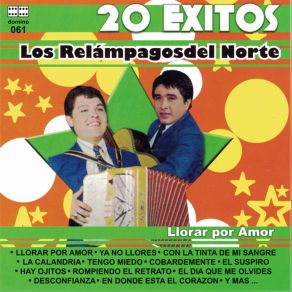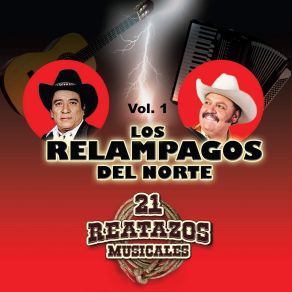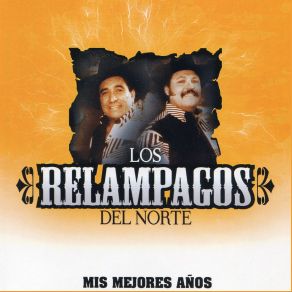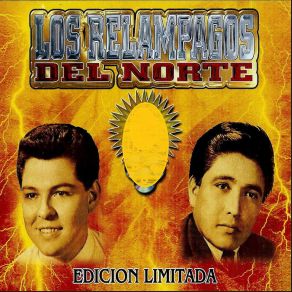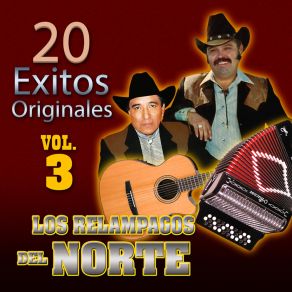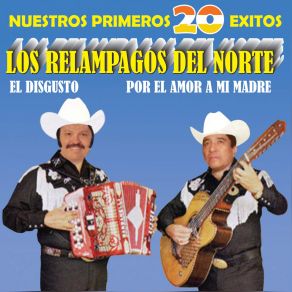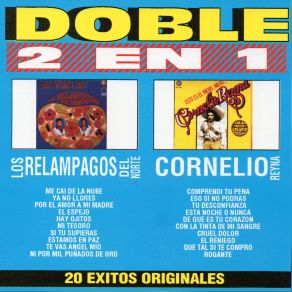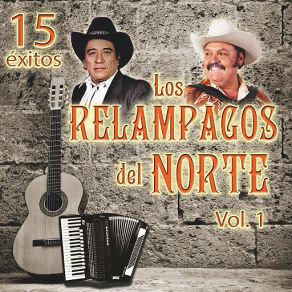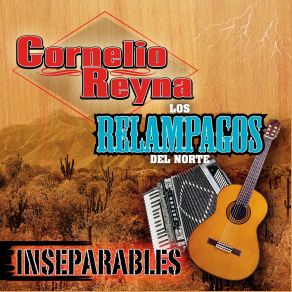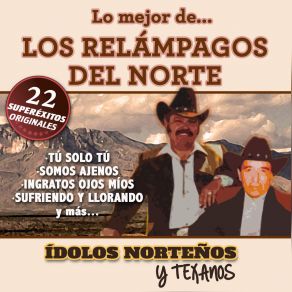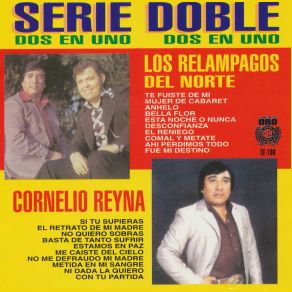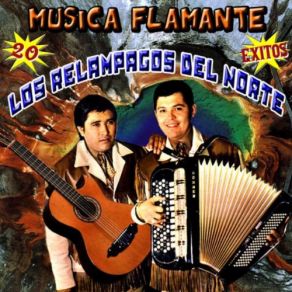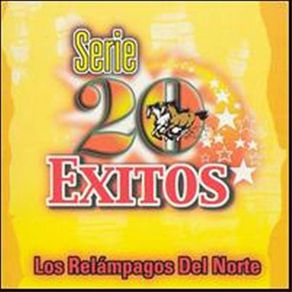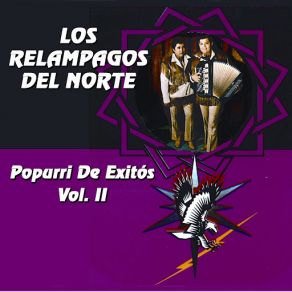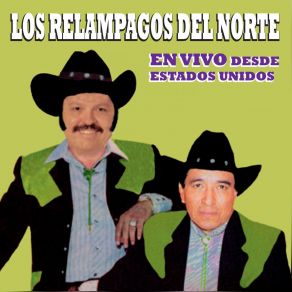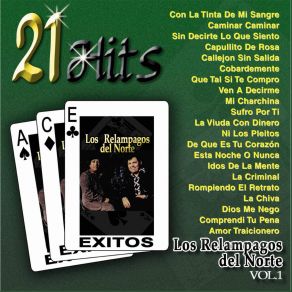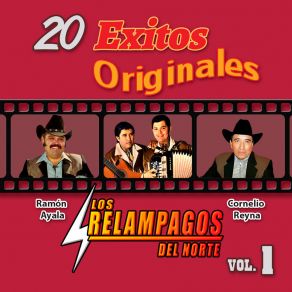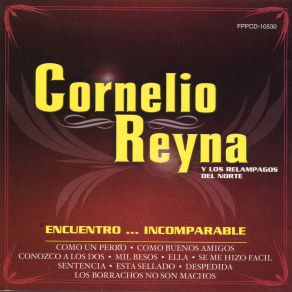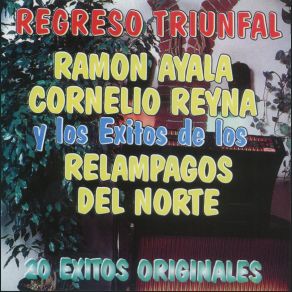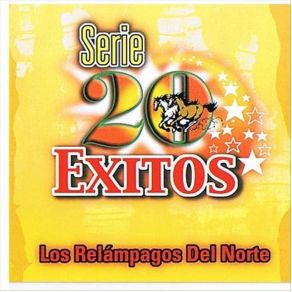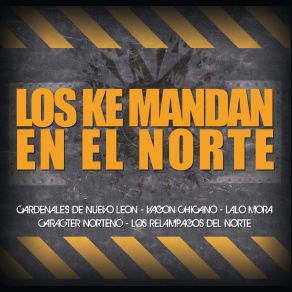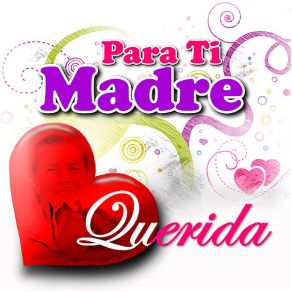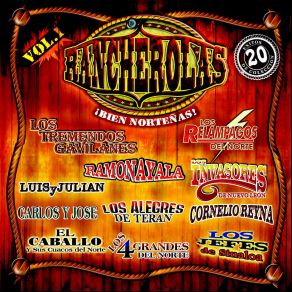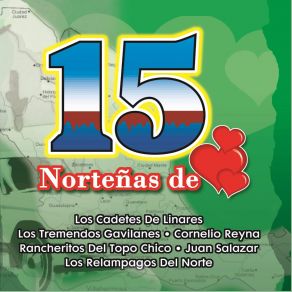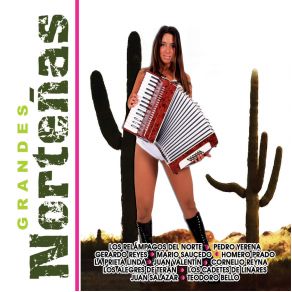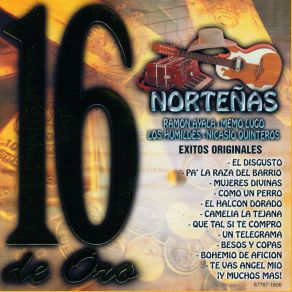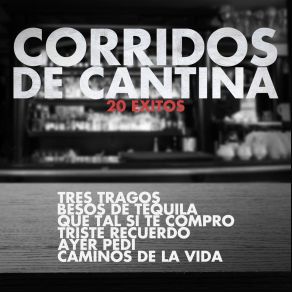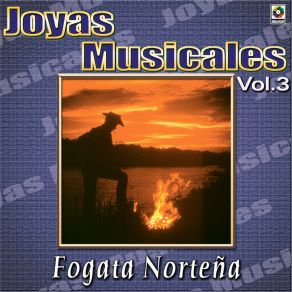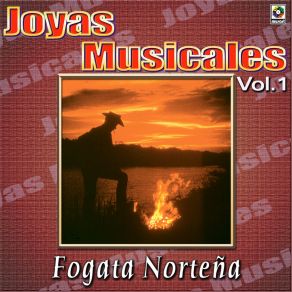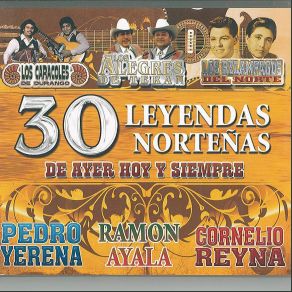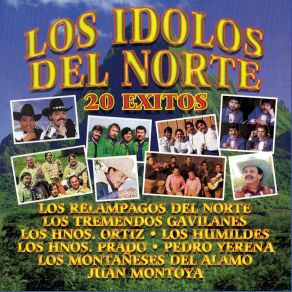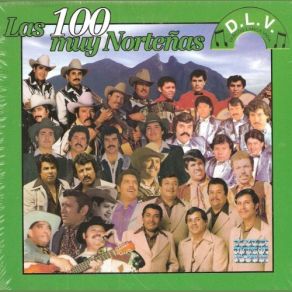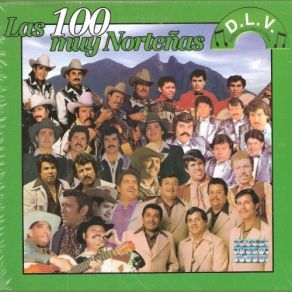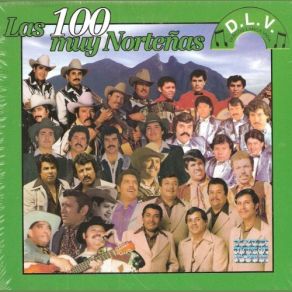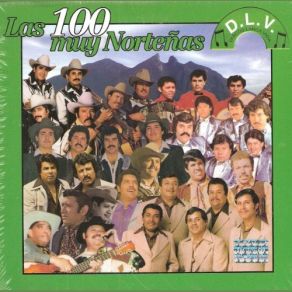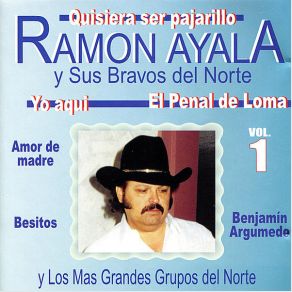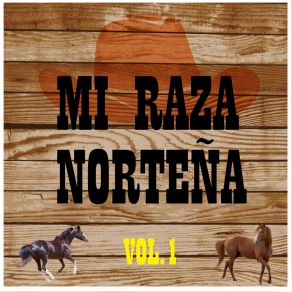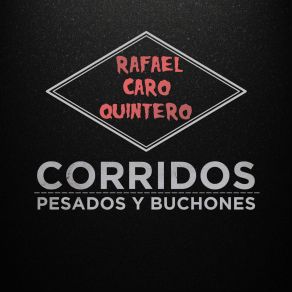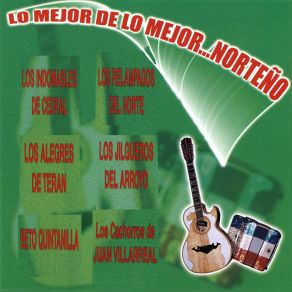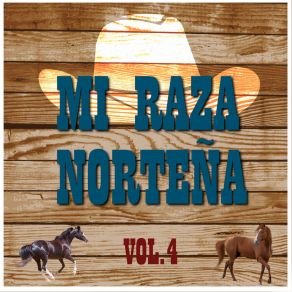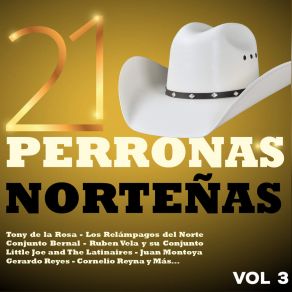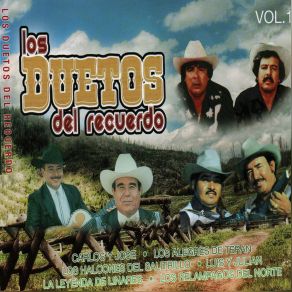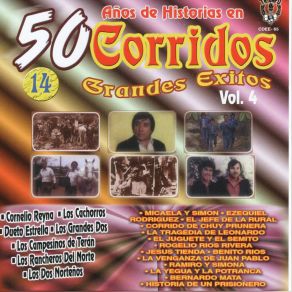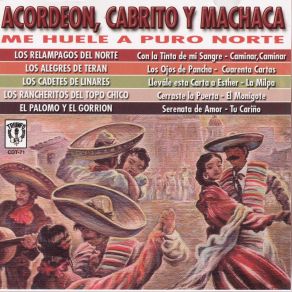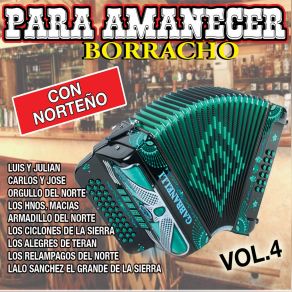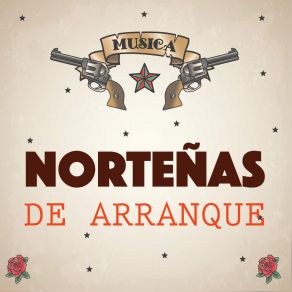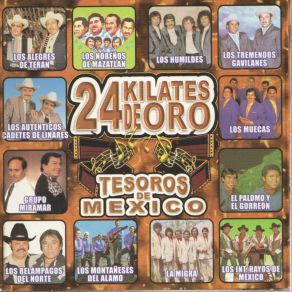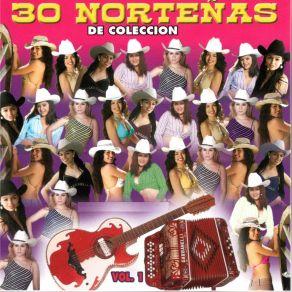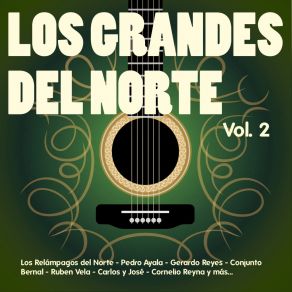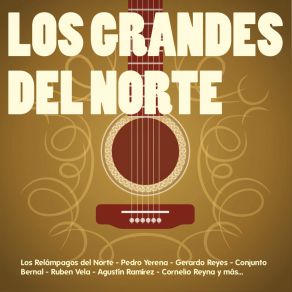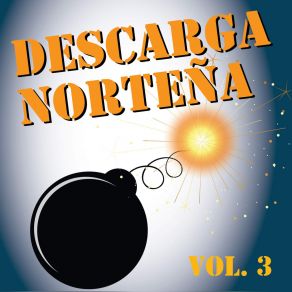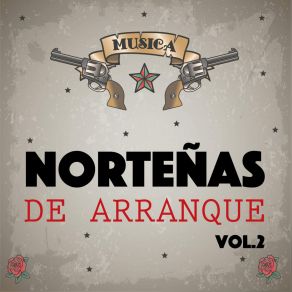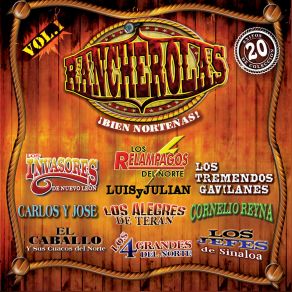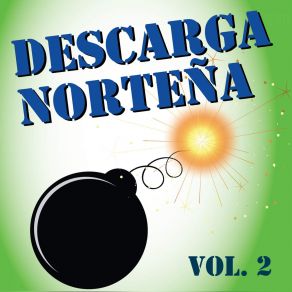Los Relámpagos Del Norte / Los Relampagos Del Norte
Wikimp3 information about the music of Los Relámpagos Del Norte / Los Relampagos Del Norte. On our website we have 70 albums and 35 collections of artist Los Relámpagos Del Norte / Los Relampagos Del Norte. You can find useful information and download songs of this artist. We also know that Los Relámpagos Del Norte / Los Relampagos Del Norte represents Latin genres.
Biography
[Edit]A seminal norteño-conjunto act, Los Relámpagos (literally "The Lightning from the North") set new standards of songcraft and technique, the latter through the astonishingly inventive playing of Ramón Ayala. They brought norteño music into the mainstream, and they did it while maintaining and even intensifying an essential "cantina" loneliness. Try an Internet video search on their classic "El Disgusto" to see the range of acts covering that song's killer accordion riff, and you will get an idea of the breadth of Los Relámpagos' influence. The overwhelming volume of re-released material and the haphazard sound of some discs can be a little daunting, but the group was remarkably consistent, and you can be sure of finding at least a couple of examples of greatness on any CD you pick up.
Cornelio Reyna was born on September 16, 1940, in Coahuila. A bricklayer by trade, he was deeply involved with music by the age of 16. Several years later he was performing in a conjunto at the Cadillac Bar in the border town of Reynosa, which is where he met the 15-year-old Ramón Ayala. Ayala was born in 1945 in Monterrey and had received his first musical education at five years of age from his father, local musician Ramón Cobarrubias. He was already a mature talent on the accordion by the time he met Reyna, having paid his dues in several groups from both Monterrey and Reynosa.
Los Relámpagos del Norte came together in 1961. Reyna played the bajo sexto, a 12-string bass guitar, sang lead vocals, and served as the group's principal songwriter. Often bass and drums were added to their basic sound. Under the management of Servando Cano, the group signed with Paulino Bernal's BEGO Records in McAllen, Texas, and released their first hit single, "Ya No Llores," in 1963.
From the outset, the bulk of Los Relámpagos' fans were migrant agricultural workers on the U.S. side of the border. Their numbers had been steadily increasing in the postwar years through a prevalence of guest-worker programs. Their music, born in the cantinas of "la frontera," had largely been overlooked during the early 20th century by affluent Mexican record-buyers who tended to live further south. Agricultural work gave a sudden jolt of disposable income to a downtrodden and somewhat isolated northern Mexican culture at a time when its cantina artists were achieving new heights of expressiveness and soulfulness.
Los Relámpagos did not invent the conjunto — such a claim ignores the contributions of Narciso Martínez, Santiago Jiménez, and the Conjunto Bernal, to name a few among many — but they arguably rode the commercial wave of the '60s with the greatest deserved success. As they gained popularity south of the border, many Mexicans perceived them as the exponents of a new popular style. A smattering of some of the great songs from this period includes "Desconfianza" (with its perfect marriage of speed and delicacy), "Devolucion," "Mi Tesoro," "Tengo Miedo," "Te Traigo Estas Flores," the almost existential "Callejón sin Salida," and "Me Caí de las Nubes."
Los Relámpagos split amicably in 1971 after nearly a decade of hits, with Reyna trying his hand at ranchero singing and movie acting. He used his reputation as a songwriter to gain roles in genre films of variable quality, some of which were actually based on concepts taken from his songs. He rapidly graduated to the director's chair and helmed several vehicles for other Mexican music stars. His post-Relámpagos music career, as a mariachi singer and as the leader of Los Reyes del Norte, was sometimes judged to be inferior to earlier greatness, and by the mid-'90s his star had dimmed slightly. Ramón Ayala meanwhile had formed the wildly successful Los Bravos del Norte, which in the ensuing three decades all but eclipsed his former band with a slicker, more commercially appealing sound.
In 1995 Los Relámpagos del Norte united for the album Juntos Para Siempre, and two years later, in 1997, they were inducted into the Pura Vida Music Hall of Fame. But by that time, Cornelio Reyna was dead — the victim of a bleeding ulcer. Ayala continued to perform with Los Bravos del Norte well into the 21st century, touring the United States frequently, not disdaining to appear at public open-air festivals and mingle with fans even as he maintained a fairly ubiquitous presence on Latin television. Meanwhile, hosts of performers on both sides of the border acknowledge their debt to his original group. ~ J. Witzgall, Rovi
Title: Popurri de Exitos, Vol. 2
Artist: Los Relámpagos Del Norte / Los Relampagos Del Norte
Genre: Latin
Title: Musica Flamante - 20 Exitos
Artist: Los Relámpagos Del Norte / Los Relampagos Del Norte
Genre: Latin
Title: 15 Grandes Exitos Vol. 2
Artist: Los Relámpagos Del Norte / Los Relampagos Del Norte
Genre: Latin
Title: 15 Grandes Exitos " Solid Gold "
Artist: Los Relámpagos Del Norte / Los Relampagos Del Norte
Genre: Latin
Title: 21 Reatazos Musicales, Vol. 1
Artist: Los Relámpagos Del Norte / Los Relampagos Del Norte
Genre: Latin
Title: Amigos Y Rivales
Artist: Los Relámpagos Del Norte / Los Relampagos Del Norte, Los Tremendos Gavilanes
Genre: Latin
Title: "Serie de Exitos" - La Histroia, Vol. 2
Artist: Los Relámpagos Del Norte / Los Relampagos Del Norte
Genre: Latin
Title: Mis Mejores Años / Mis Mejores Anos
Artist: Los Relámpagos Del Norte / Los Relampagos Del Norte
Genre: Latin
Title: Tu Desconfianza - Single
Artist: Los Relámpagos Del Norte / Los Relampagos Del Norte
Genre: Latin
Title: 20 Exitos Originales, Vol. 3
Artist: Los Relámpagos Del Norte / Los Relampagos Del Norte
Genre: Latin Folk
Title: Doble 2 En 1
Artist: Cornelio Reyna, Los Relámpagos Del Norte / Los Relampagos Del Norte
Genre: Latin
Title: 15 Exitos Vol. 1
Artist: Los Relámpagos Del Norte / Los Relampagos Del Norte
Genre: World Music, Latin
Title: Inseparable
Artist: Cornelio Reyna, Los Relámpagos Del Norte / Los Relampagos Del Norte
Genre: Latin
Title: Pasado, Presente… Y Para Siempre...
Artist: Los Relámpagos Del Norte / Los Relampagos Del Norte
Genre: Latin
Title: Por el Amor a Mi Madre
Artist: Los Relámpagos Del Norte / Los Relampagos Del Norte
Genre: Latin
Title: Popurri De Exitos-Vol. I
Artist: Los Relámpagos Del Norte / Los Relampagos Del Norte
Genre: Latin
Title: 20 Exitos Originales
Artist: Los Relámpagos Del Norte / Los Relampagos Del Norte
Genre: World Music, Latin
Title: Falsa Ilusión / Falsa Ilusion
Artist: Los Relámpagos Del Norte / Los Relampagos Del Norte
Genre: Latin
Title: Popurri De Exitos-Vol. II
Artist: Los Relámpagos Del Norte / Los Relampagos Del Norte
Genre: Latin
Title: En Vivo Desde Estados Unidos
Artist: Los Relámpagos Del Norte / Los Relampagos Del Norte
Genre: World Music, Latin
Title: Esta Noche O Nunca - Single
Artist: Los Relámpagos Del Norte / Los Relampagos Del Norte
Genre: Latin
Title: 12 Exitos Inolvidables
Artist: Los Relámpagos Del Norte / Los Relampagos Del Norte
Genre: Latin
Title: Aunque Tengas Otros Amores
Artist: Los Relámpagos Del Norte / Los Relampagos Del Norte
Genre: Latin Folk
Title: Bonita Finca De Adobe
Artist: Los Relámpagos Del Norte / Los Relampagos Del Norte
Genre: Latin Folk
Title: Mi Talismán / Mi Talisman
Artist: Los Relámpagos Del Norte / Los Relampagos Del Norte
Genre: World Music, Latin
Title: 30 Éxitos / 30 Exitos
Artist: Los Relámpagos Del Norte / Los Relampagos Del Norte
Genre: Latin
Title: 20 Exitos Originales, Vol. 1
Artist: Los Relámpagos Del Norte / Los Relampagos Del Norte
Genre: Latin Folk
Title: Sus Mejores " 20 Super Exitos "
Artist: Los Relámpagos Del Norte / Los Relampagos Del Norte
Genre: Latin
Title: Llegaron, Triunfaron, Se Fueron
Artist: Los Relámpagos Del Norte / Los Relampagos Del Norte
Genre: Latin
Title: 20 Éxitos / 20 Exitos
Artist: Los Relámpagos Del Norte / Los Relampagos Del Norte
Genre: Latin
Title: Encuentro ... Incomparable
Artist: Cornelio Reyna, Los Relámpagos Del Norte / Los Relampagos Del Norte
Genre: Latin
Title: Paquetazo De Coleccion
Artist: Los Relámpagos Del Norte / Los Relampagos Del Norte
Genre: Latin
Collections
Title: Los Ke Mandan en el Norte
Genre: Latin
Title: Los #1 Norteños / Los #1 Nortenos
Genre: Latin
Title: Para Ti Madre Querida
Genre: Latin
Title: 30 Leyendas Nortenas: De Ayer Hoy y Siempre
Genre: Latin
Title: Rancherolas "Bien Nortenas"
Genre: Latin
Title: Protagonistas del Norteño / Protagonistas del Norteno
Genre: Latin
Title: 15 Nortenas de Corazón / 15 Nortenas de Corazon
Genre: Latin
Title: La Musica de... La Ranchera
Genre: Latin
Title: Pa' Pura Gente de Rancho
Genre: Latin
Title: Grandes Norteñas / Grandes Nortenas
Genre: World Music, Latin
Title: Exitazos De Cadetes, Relampagos Y Gavilanes
Genre: World Music
Title: Norteños por Siempre / Nortenos por Siempre
Genre: Latin
Title: Corridos 16 Éxitos De Oro / Corridos 16 Exitos De Oro
Genre: Latin
Title: 30 Leyendas Norteñas / 30 Leyendas Nortenas
Genre: Latin
Title: Pokar de Reyes
Genre: Latin
Title: 25 Exitos - Arriba el Norte
Genre: Latin
Title: Ofrenda Norteña a Mi Madre / Ofrenda Nortena a Mi Madre
Genre: Latin
Title: Sabor Norteño / Sabor Norteno
Genre: Latin
Title: Las 100 Muy Norteñas (CD4) / Las 100 Muy Nortenas (CD4)
Genre: Latin
Title: Las 100 Muy Norteñas (CD3) / Las 100 Muy Nortenas (CD3)
Genre: Latin
Title: Las 100 Muy Norteñas (CD1) / Las 100 Muy Nortenas (CD1)
Genre: Latin
Title: Las 100 Muy Norteñas (CD2) / Las 100 Muy Nortenas (CD2)
Genre: Latin
Featuring albums
Title: 30 Éxitos: Música Norteña / 30 Exitos: Musica Nortena
Artist: Vários Artistas / Varios Artistas
Genre: World Music, Latin
Title: Grandes Norteñas / Grandes Nortenas
Artist: Vários Artistas / Varios Artistas
Genre: World Music, Latin
Title: Complaceré Tu Gusto / Complacere Tu Gusto
Artist: Vários Artistas / Varios Artistas
Genre: World Music, Latin
Title: Mi Raza Norteña, Vol. 1 / Mi Raza Nortena, Vol. 1
Artist: Various Artists
Genre: World Music, Latin
Title: 12 Norte–as Para Toda La Vida / 12 Norte-as Para Toda La Vida
Artist: Various Artists
Genre: Latin
Title: Con Espíritu Norteño, Vol.3 / Con Espiritu Norteno, Vol.3
Artist: Various Artists
Genre: World Music, Latin
Title: Lo Mejor de Lo Mejor... Norteño / Lo Mejor de Lo Mejor... Norteno
Artist: Various Artists
Genre: Latin
Title: Con Espíritu Norteño, Vol.4 / Con Espiritu Norteno, Vol.4
Artist: Various Artists
Genre: World Music, Latin
Title: 21 Perronas Norteñas, Vol. 2 / 21 Perronas Nortenas, Vol. 2
Artist: Various Artists
Genre: World Music, Latin
Title: 21 Perronas Norteñas, Vol. 4 / 21 Perronas Nortenas, Vol. 4
Artist: Various Artists
Genre: World Music, Latin
Title: Mi Raza Norteña, Vol. 3 / Mi Raza Nortena, Vol. 3
Artist: Various Artists
Genre: World Music, Latin
Title: Mi Raza Norteña, Vol. 2 / Mi Raza Nortena, Vol. 2
Artist: Various Artists
Genre: World Music, Latin
Title: Mi Raza Norteña, Vol. 4 / Mi Raza Nortena, Vol. 4
Artist: Various Artists
Genre: World Music, Latin
Title: Norteño de Pura Cepa, Vol. 4 / Norteno de Pura Cepa, Vol. 4
Artist: Various Artists
Genre: World Music, Latin
Title: 21 Perronas Norteñas, Vol. 3 / 21 Perronas Nortenas, Vol. 3
Artist: Various Artists
Genre: World Music, Latin
Title: Lo Mejor del Norteño, Vol. 2 / Lo Mejor del Norteno, Vol. 2
Artist: Various Artists
Genre: Latin
Title: Voz y Sentimiento Norteño, Vol. 2 / Voz y Sentimiento Norteno, Vol. 2
Artist: Various Artists
Genre: Latin
Title: Voz y Sentimiento Norteño, Vol. 4 / Voz y Sentimiento Norteno, Vol. 4
Artist: Various Artists
Genre: Latin
Title: 30 Norteñas Famosas, Vol. 1 / 30 Nortenas Famosas, Vol. 1
Artist: Various Artists
Genre: Latin
Title: Tesoros De México 24 Kilates De Oro / Tesoros De Mexico 24 Kilates De Oro
Artist: Various Artists
Genre: Latin
Title: 30 Nortenas De Colección, Vol. 1 / 30 Nortenas De Coleccion, Vol. 1
Artist: Various Artists
Genre: Latin
Title: Los Grandes del Norte, Vol. 2
Artist: Vários Artistas / Varios Artistas
Genre: World Music, Latin
Title: Fiesta Norteña, Vol. 2 / Fiesta Nortena, Vol. 2
Artist: Various Artists
Genre: World Music, Latin
Title: Descarga Norteña, Vol. 3 / Descarga Nortena, Vol. 3
Artist: Various Artists
Genre: World Music, Latin
Title: Norteñas de Arranque, Vol. 3 / Nortenas de Arranque, Vol. 3
Artist: Various Artists
Genre: World Music, Latin
Title: Descarga Norteña, Vol. 1 / Descarga Nortena, Vol. 1
Artist: Various Artists
Genre: World Music, Latin
Title: Descarga Norteña, Vol. 2 / Descarga Nortena, Vol. 2
Artist: Various Artists
Genre: World Music, Latin
